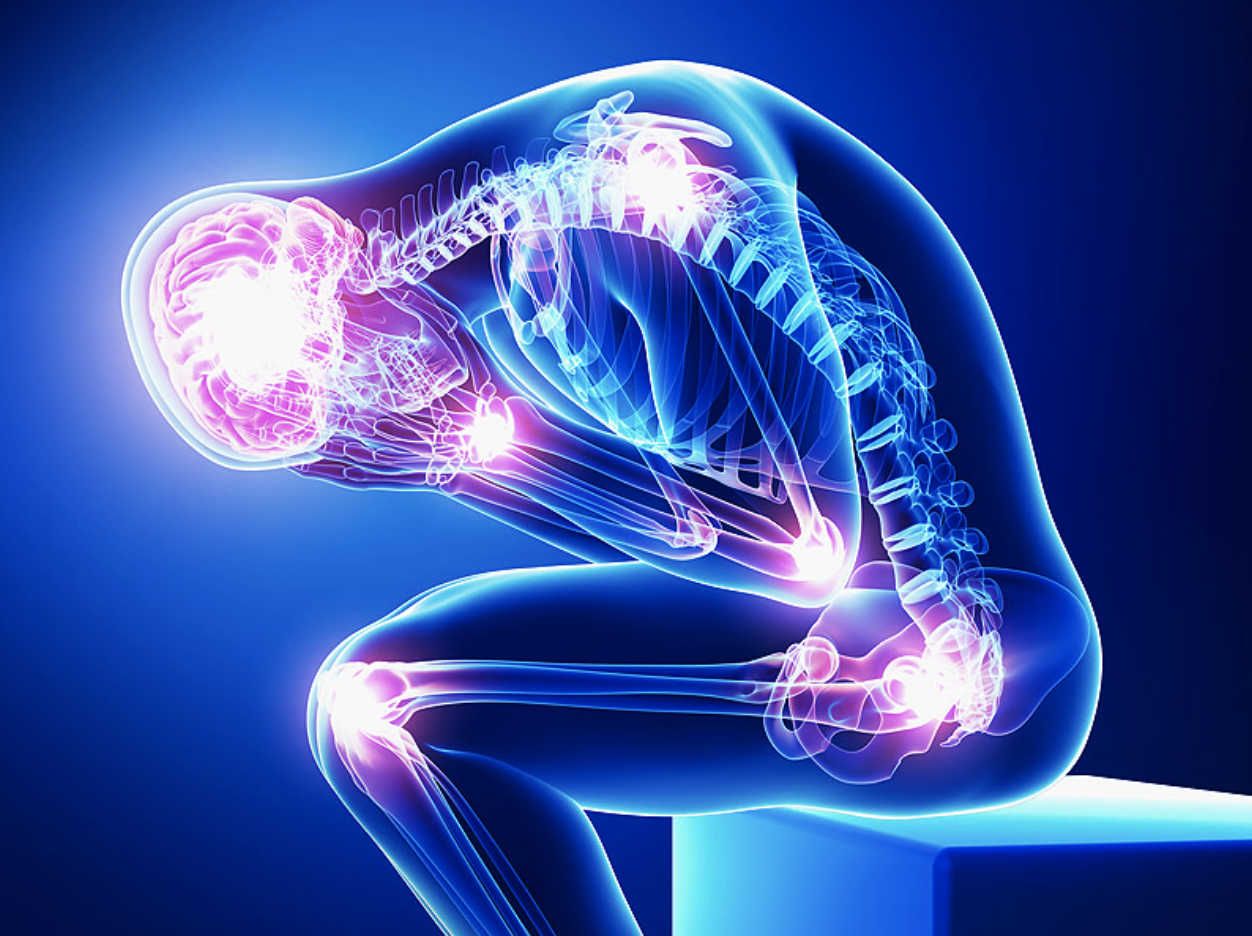
Pain, Pain Pain Go Away
According to an article by MedlinePlus Magazine, as part of the NIH HEAL (Helping to End Addiction Long-term) Initiative, NCCIH is studying how treatments such as mindfulness, acupuncture, and massage can help address chronic pain while reducing the need for opioids1.
The NIH HEAL Initiative also supports the Integrative Management of chronic Pain and OUD for Whole Recovery (IMPOWR) network of multidisciplinary team science collaborations to address the needs of people with pain and a substance use disorder2.
A cohort study using a process-oriented approach found that a 2-week integrative medicine inpatient treatment can benefit patients with chronic pain conditions3.
Chronic pain can indicate ongoing tissue damage, such as inflammation, or can persist due to central nervous system sensitization resulting from increased neuronal and circuit activation in nociceptive pathways even after the tissue has healed4. As a chronic syndrome, pain adversely affects function and psychological and social well-being4.
Chronic pain is pain that lasts for over three months. The pain can be there all the time, or it may come and go. It can happen anywhere in your body and can interfere with your daily activities, such as working, having a social life and taking care of yourself or others. Chronic pain can lead to depression, anxiety and trouble sleeping, which can make your pain worse 1.
Chronic pain syndrome takes a toll on both your physical and mental health. While the pain can be near-constant, there may be flares of more intense pain due to increases in stress or activity 2. Individuals who experience chronic pain may find themselves feeling depressed or anxious. They will also be at risk for substance abuse and other mental health disorders. Other common emotional responses to pain can include sadness, frustration, anger or feeling misunderstood and demoralized 3.
Living with chronic pain can be challenging and it’s important for individuals to seek support from healthcare professionals, friends, family and support groups.
There are many ways to manage chronic pain and not all of them include taking medication. Some ways to manage chronic pain include:
- Physical techniques such as physical therapy, hot and cold therapy, massage, and acupuncture 1.
- Staying active with an activity routine recommended by your healthcare provider 2.
- Reducing stress and practicing relaxation techniques such as meditation and deep breathing 2.
- Pacing yourself and balancing daily tasks, recreation and other responsibilities 2.
- Addressing other conditions that worsen pain such as anxiety and depression 2.
- Maintaining a positive outlook by scheduling enjoyable activities 2.
- Staying connected with others 2.
It’s important to work with your healthcare provider to create a pain management plan that works for you. Treatment for chronic pain may include a combination of medications, therapies and lifestyle changes.
Meditation can help relieve chronic pain by triggering the release of endorphins, your body’s natural painkillers 1. Meditation retrains the brain to use different pathways to deal with pain from those used by other pain treatments. Over time, meditation can change your brain structure to better deal with pain 2.
Meditation is the practice of focusing awareness on the present moment and not judging your thoughts in the process. While meditation can’t “take the pain away,” it can help us calm down so we can observe sensations in our body (including pain). This might help us relax and accept discomfort. Observing and accepting discomfort may help increase your tolerance for pain 3.
There are many different forms of meditation that can help manage pain such as mindfulness meditation, body scan meditation, guided imagery and transcendental meditation 3. It’s important to find a style that works for you and to practice regularly.
There are many natural and alternative treatments for chronic pain. Some of these include:
- Herbs and spices such as Boswellia, Turmeric, and Cloves 1.
- Acupuncture 1.
- Heat and ice therapy 1.
- Yoga 2.
- White willow bark 3.
It’s important to work with your healthcare provider to determine which natural and alternative treatments may be right for you. Some natural remedies can interfere with other medications you are taking.
